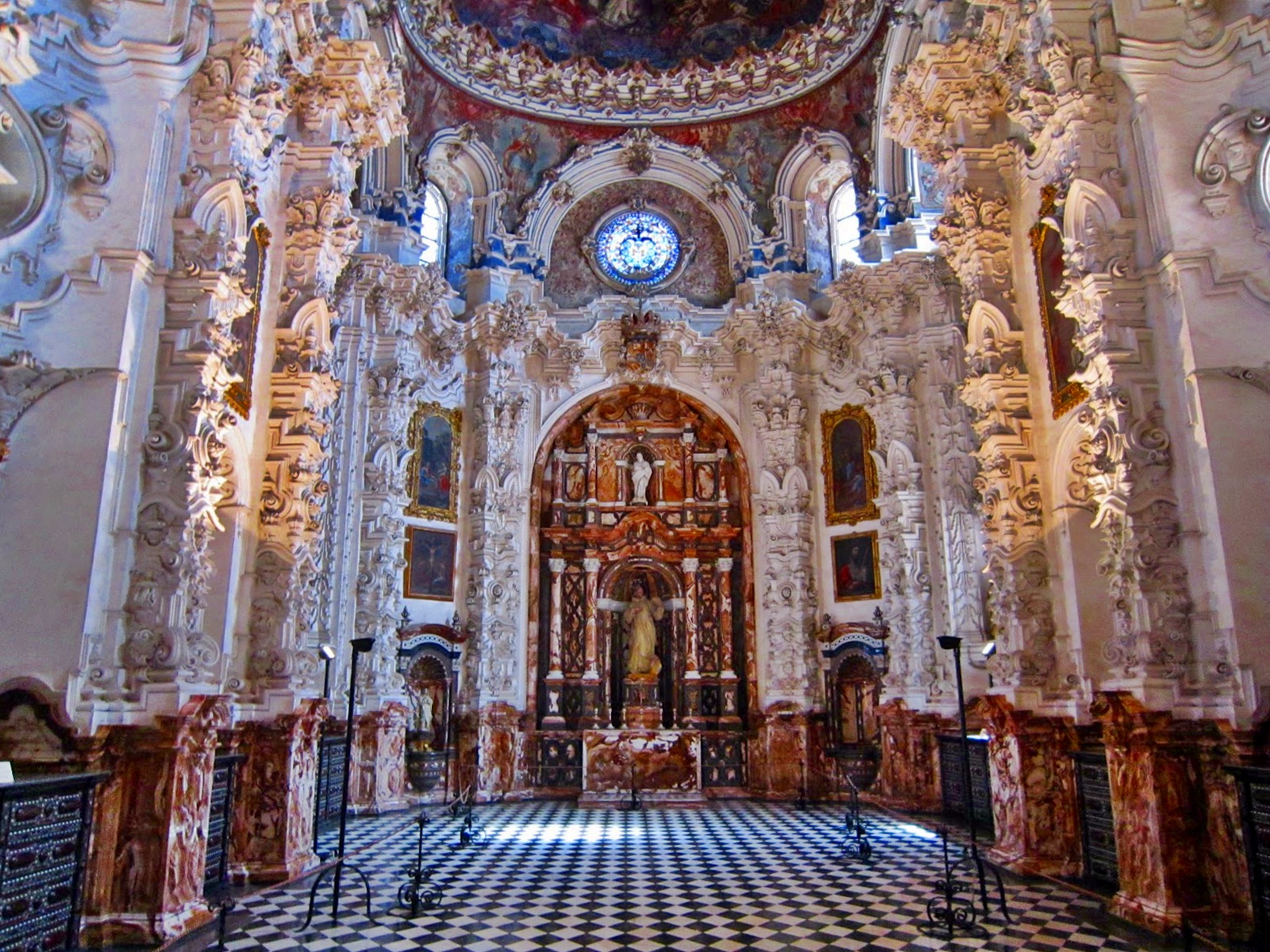The Monastery of Cartuja
The building of this monastery began in 1506, blending Gothic, Renaissance, and Baroque styles. The church, the Sancta Sanctorum and Sacristy illustrate the rise of the Spanish and Andalusian Baroque style.
Named a monument of cultural interest, the monastery houses a valuable collection of paintings by the Carthusian monk Sánchez Cotán, as well as by Bocanegra and Carducho.

The church was completed in the early 17th century by Cristóbal de Vílchez and has a single nave. The façade is made of grey marble with two large Ionic columns, made by Joaquín Hermoso in 1794. The door, which divides the choir stalls, is by José Manuel Vázquez. It is inlaid with ivory, tortoiseshell, silver, ebony and wood.
The Sancta Sanctorum is behind the main altar and is accessed through a beautiful door of Venetian glass. The original tabernacle was made of silver, but it was looted by the Napoleonic soldiers. Today’s tabernacle is carved from precious woods and dates back to 1816. The paintings, depicting scenes from the Old Testament, are by Palomino, who also painted the cupola in 1722 with the help of Risueño.
The Sacristy is considered to be one of the finest works of Spanish Baroque. It is rectangular in shape with a vaulted ceiling. The marble socle and the chests are both by the Carthusian monk J. Manuel Vázquez, who took 34 years to complete them.
The monastery was lived in until 1836 when, under the Ecclesiastical Confiscations of Mendizábal, it was taken away from the monks.